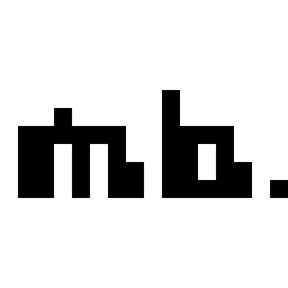Welcome to the Onshape forum! Ask questions and join in the discussions about everything Onshape.
First time visiting? Here are some places to start:- Looking for a certain topic? Check out the categories filter or use Search (upper right).
- Need support? Ask a question to our Community Support category.
- Please submit support tickets for bugs but you can request improvements in the Product Feedback category.
- Be respectful, on topic and if you see a problem, Flag it.
If you would like to contact our Community Manager personally, feel free to send a private message or an email.
An implementation for qQueryCompoundFilter
 MBartlett21
Member, OS Professional, Developers Posts: 2,064 ✭✭✭✭✭
MBartlett21
Member, OS Professional, Developers Posts: 2,064 ✭✭✭✭✭
I have always been annoyed by the lack of a filtering mechanism for
Please see the code below (It also requires
Query operators:
PS: The idea of using
QueryCompoundFilters, so I decided to build my own function to do the job.Please see the code below (It also requires
Query operators, an implementation of which can be found below that code)export function qQueryCompoundFilter(q is Query, filter is QueryFilterCompound) returns Query
{
return q * qUnion(switch (filter) {
(QueryFilterCompound.ALLOWS_AXIS) : [
qGeometry(q, GeometryType.LINE),
qGeometry(q, GeometryType.CIRCLE),
qGeometry(q, GeometryType.ARC),
qGeometry(q, GeometryType.CYLINDER),
qBodyType(q, BodyType.MATE_CONNECTOR)
],
(QueryFilterCompound.ALLOWS_DIRECTION) : [
qGeometry(q, GeometryType.LINE),
qGeometry(q, GeometryType.CIRCLE),
qGeometry(q, GeometryType.ARC),
qGeometry(q, GeometryType.PLANE),
qGeometry(q, GeometryType.CYLINDER),
qBodyType(q, BodyType.MATE_CONNECTOR)
],
(QueryFilterCompound.ALLOWS_PLANE) : [
qGeometry(q, GeometryType.PLANE),
qBodyType(q, BodyType.MATE_CONNECTOR)
],
(QueryFilterCompound.ALLOWS_VERTEX) : [
qEntityFilter(q, EntityType.VERTEX),
qBodyType(q, BodyType.MATE_CONNECTOR)
]
});
}Query operators:
// Actually, the + (Union) and - (Subtraction) operators are not needed for this feature, only the * (intersection). I just included them for completeness
export operator+(lhs is Query, rhs is Query) returns Query
{
if (lhs.queryType == QueryType.UNION)
{
lhs.subqueries = @resize(lhs.subqueries, @size(lhs.subqueries) + 1, rhs);
return lhs;
}
return qUnion([lhs, rhs]);
}
export operator-(lhs is Query, rhs is Query) returns Query
{
return qSubtraction(lhs, rhs);
}
export operator*(lhs is Query, rhs is Query) returns Query
{
if (lhs.queryType == QueryType.INTERSECTION)
{
lhs.subqueries = @resize(lhs.subqueries, @size(lhs.subqueries) + 1, rhs);
return lhs;
}
return qIntersection([lhs, rhs]);
}PS: The idea of using
Query operators stemmed from this discussion. As an example of their use, see my Australian Beams feature here, where they are used quite a lot. For instance, instead of making a Query by populating an array then using qUnion, I can just start off with qNothing() and then use query += stuff; 2
Comments
Why do you have the in your qQueryCompoundFilter function? All of your subqueries in the qUnion filter q.
In this case, using qIntersection more commonly is probably going to have performance implications. A qIntersection works by first evaluating both inputs, in their entirety, and then finding common entities. If the two queries are both filters of the same root query, then you save some work by replacing the slow
with the faster
Even if qIntersection() itself were free to evaluate, the second query will be faster. The difference is: qBodyType in the latter is only filtering through the bodies, while qBodyType in the former it's filtering through all entities. The cost of this evaluation won't show up in your * code itself, but later, when that query needs to be evaluated (either directly with evaluateQuery(myQuery) or indirectly with e.g. opExtrude(... myQuery ...)). I don't see a great way of keeping the * syntax convenient while keeping the resulting queries fast (but that fact makes me like the -> syntax from the post you linked even more
The reason I have it in there is so that the Query evaluates in the proper order (see the documentation for qIntersection - "qIntersection preserves the order of the first subquery")
EDIT: Fixed @mention
IR for AS/NZS 1100
Currently, to filter by that, we need to get the internal body, then filter by an EntityType, then get the entities in the part.
IR for AS/NZS 1100